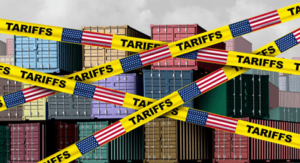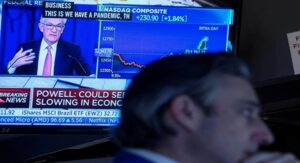
China’s Economic Prospects in 2024
China’s economic prospects at the outset of 2024 appear challenging, marked by pessimistic forecasts and a projected slowdown in GDP growth to 4.6%, as indicated by the International Monetary Fund. Despite the Chinese government’s optimism and the successful consumption-driven growth of 2023, concerns loom over a potential consumption slowdown in 2024 and a decline in net export growth.
To meet a 5% GDP growth target, the focus must shift to increasing investment growth, especially in manufacturing and infrastructure. Although China faces a quasi-deflationary period, policymakers can deploy fiscal stimulus without immediate inflation concerns, potentially revitalizing the economy in 2024 through strategic fiscal and monetary policies.
Table of Contents
China’s Economic Prospects
The year 2024 has ushered in a tide of apprehension regarding China economic trajectory. Despite the government’s optimism, global organizations like the International Monetary Fund (IMF) project a slowdown in GDP growth to 4.6%, down from 5.4% in 2023.
This has been exacerbated by a stock-market rout, with share prices plummeting to a five-year low. Amidst these concerns, China’s economic prospects remain a focal point. However, beneath the surface of these challenges lie opportunities for China to leverage its economic resilience.
In this article, we explore six key points to understand China’s economic scenarios in 2024.
1. Consumption Dynamics and Growth Targets
China’s economic growth in 2023 was primarily driven by consumption, contributing to 82.5% of the GDP increase. Retail sales of social consumer goods rose by 7.2%, signaling a recovery in consumer spending. However, sustaining this momentum appears uncertain, and many economists anticipate a slowdown in consumption for 2024.
Amid these dynamics, China’s economic prospects are being closely scrutinized, with concerns arising about the sustainability of the growth trajectory. Additionally, the country faces challenges related to the so-called China’s debt trap, which adds another layer of complexity to the economic aspect.
Despite these challenges, the Chinese government is expected to set an ambitious annual growth target of 5%, building upon the better-than-expected economic performance in 2023.
2. Global Trade Challenges
Weakened by a decline in global demand, China experienced a 1.3% decrease in net export growth in 2023. With the global economic outlook remaining bleak in 2024, the contribution of net exports to China’s GDP growth is anticipated to be minimal.
To counter this, significant growth in investment is imperative. However, China’s fixed asset investment (FAI) rose only by 3% in 2023, compared to 5.1% in 2022, posing a challenge to achieving the 5% GDP growth target. Amidst these economic challenges, China’s economic prospects gain additional importance, and strategic initiatives
like the India-Middle East-Europe Economic Corridor could potentially play a significant role in fostering economic resilience and expansion in the face of global uncertainties.
3. Manufacturing, Real Estate, and Infrastructure Investments
China’s FAI comprises three primary categories: manufacturing, real estate, and infrastructure. While certain manufacturing industries experienced growth in 2023, the overall increase was modest. Real estate investment fell by 9.1% in 2023 and is expected to continue declining, posing challenges to China’s economic prospects.
To compensate for the decline in consumption growth, a substantial increase of more than 10% in infrastructure investment, a crucial component of capital investment, is required. This presents a formidable challenge given the 5.8% increase observed in 2023.
4. Quasi-Deflationary Period and Fiscal Stimulus
The Chinese economy currently grapples with a quasi-deflationary period, as indicated by negative consumer price index (CPI) and producer price index (PPI).
This unique situation, coupled with the complexities of China’s economic prospects as it aims to solidify its position as a global superpower, provides policymakers with an opportunity to introduce significant fiscal stimulus without immediate inflation concerns.
The People’s Bank of China (PBOC) should consider easing its monetary policy, setting an inflation target of 3-4%, and utilizing interest rates as a short-term macroeconomic tool.
5. Infrastructure Investment as a Stimulus
Infrastructure investment remains a potent instrument for stimulating the economy during periods of weak demand. China’s economic prospects, often hailed as the world’s factory, bring forth the realization that the country still grapples with a substantial infrastructure gap, particularly in critical sectors such as healthcare, elderly care, education, research, urban development, and transportation.
To meet these evolving needs and further solidify its position as a global economic powerhouse, Chinese policymakers must strategically invest in efficient, high-quality projects. This can be achieved through financing initiatives using government budgets, leveraging the issuance of sovereign bonds, and potentially considering the implementation of a form of quantitative easing.
6. Fiscal Policy Shift and Addressing Challenges
China’s decision to issue an additional CN¥1 trillion ($137 billion) in government bonds in 2023 marked a significant policy shift, reflecting a nuanced approach to navigating the intricacies of its economic landscape. While the government’s willingness to allow the budget-deficit-to-GDP ratio to increase from 3% to 3.8% signals a departure from rigid fiscal constraints, the country faces multifaceted challenges.
These include grappling with high local-government debt and a liquidity crisis in the real-estate sector. Against the backdrop of China’s economic prospects and amidst global political turmoil, addressing these concerns necessitates a strategic blend of expansionary fiscal and monetary policies.
Moreover, meaningful reforms are imperative to instill confidence in the economy, particularly given the uncertainties prevailing in the global political arena.
Bottom Line
Despite the prevailing pessimism surrounding China economic outlook in 2024, a closer examination reveals opportunities for growth and resilience. China’s economic prospects could be bolstered through a nuanced approach involving fiscal stimulus, strategic infrastructure investments, and adept monetary policies.
Addressing challenges head-on and embracing necessary reforms may lead to the reversal of the economic slowdown, ensuring robust growth in the years to come. As the global landscape evolves, proactive measures could position China to capitalize on emerging opportunities and maintain its role as a key player in the world economy.





